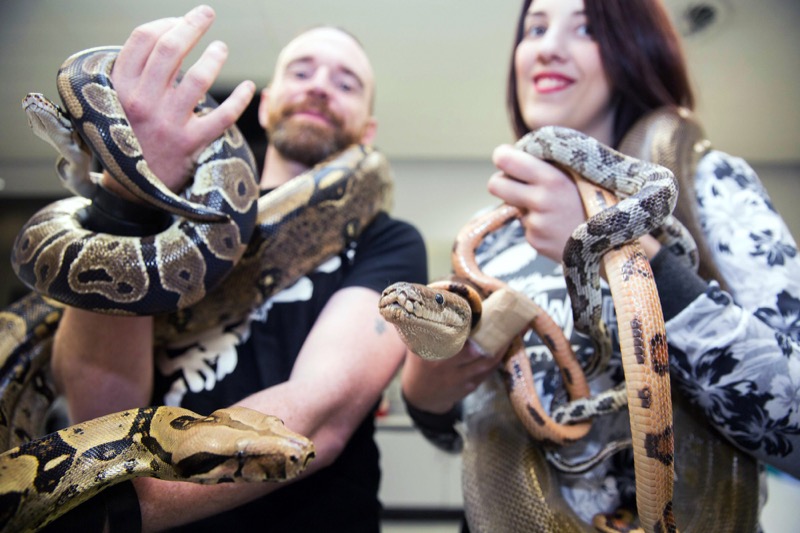Could Ireland’s Ecosystems Cope if we Introduced St Patrick’s Scaly Foes?
Posted on: 16 March 2016
- Snakes could likely persist in Ireland if they were introduced.
- Irish ecosystems have never had snakes in them and if they made it here now they would have negative effects on our native species.
- If we could conjure some modern-day St Patrick sorcery, invasive species such as the New Zealand flatworm would be at the top of Ireland’s ‘banish list’.
The legend of St Patrick banishing snakes from the emerald isle some 1,500 years ago is indelibly etched in folklore – even if science suggests snakes were unlikely to have colonised the country following the last ice age.
But what would happen if we introduced St Patrick’s scaly foes now? Would our native wildlife sink or swim?
Experts from Trinity College Dublin believe snakes could certainly slither into our ecosystems if introduced but would likely cause trouble for our native ecosystems. We have enough troublesome pests here today, such as the introduced New Zealand flatworm, which we would like to send on its merry way with some modern-day St Patrick-style sorcery.
Associate researcher in Trinity’s School of Natural Sciences, Collie Ennis, is a snake expert. He said: “If you look across the water, the UK has very similar environmental conditions to ours and snakes fit right in. Native animals that would not have evolved around snakes as predators would be lost if snakes were introduced here but snakes could probably persist.”

Interestingly, a number of attempts have been made to introduce grass snakes, one of three species that are native to Britain, over the past 100 years. Until recently, grass snakes could even be bought in pet shops throughout the land.
Collie Ennis added: “There are anecdotal records of individuals releasing several grass snakes along the Royal Canal in Dublin but luckily the snakes failed to establish populations. This could simply be due to the small numbers of snakes introduced, the unappealing climate, or to a combination of these factors.”
Worryingly, Professor of Zoology at Trinity, Yvonne Buckley, says there are lots of other invasive species that have established, and whose ecological influence is growing quickly. Some of these species present a real threat to our environment and economy.
Near the top of that list is the New Zealand flatworm, a relative newcomer to our shores, which feeds on our native earthworms that provide important ecosystem services as well as currying favour with farmers for enhancing the fertility and drainage of agricultural soils.
Professor Buckley said: “New Zealand flatworms are not snakes but they are long and legless, and our ecosystems and farms would benefit from their removal. It certainly would be legendary if I could magically banish these legless interlopers! Unfortunately it costs a lot more to banish unwanted pests now than it did in St Patrick’s day, so introduction of snakes would be a very expensive mistake.”
Other invasive species that threaten Irish biodiversity and harm our economy include zebra mussels, muntjac deer, harlequin ladybirds, mink, mitten crabs, rhododendron and Japanese knotweed.
